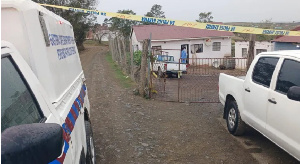- Abaare Reports
- Addi Kujay
- AfricaCNNnews
- Afriyie Kwaku Boachie
- AHAFO
- Alby News Ghana
- ASHANTI
- BONO EAST
- BRONG AHAFO
- Canard Afriq
- Cash In Trash
- CENTRAL
- Cherries
- Club Mate
- Courageous World
- Crest City News
- Current Affairs
- Daily Biz
- DailySpot
- Daniel Kaku
- Da Spicy News
- DC KWAME KWAKYE
- EASTERN
- EBI
- Facts Check
- Gabs Feed
- Ghana News Timeline
- Ghana News Update
- Godblessed1
- GREATER ACCRA
- Great Okocha
- Harry Graphic
- iNews
- Info News Ghana
- King B
- Kofipedia
- Lovely
- Managing GH
- Man Zekay
- Mart News Empire
- Maxkaytheblogger
- Mohammed Zakwan
- MyDailyNews
- Nana Kay News
- News Hub GH
- News Today
- News Zone 360
- Nine 9
- NORTH EAST
- NORTHERN
- ObuabaMedia
- OTI
- Priests News
- Royalnews360
- Sahara Writers
- SAVANNAH
- Simpsons Blog
- Skate News
- Smart News Ghana
- SpinnerWeb
- Teddytheblogger
- Ted News Ghana
- The news
- TheoNews
- Trending Now
- UPPER EAST
- UPPER WEST
- VOLTA
- Wadupgh
- Web Brief
- WESTERN
- WESTERN NORTH
Crest City News Blog of Saturday, 17 June 2023
Source: Crest City News
Good news on candidate will fail the 2023 wace explain

The West African Examinations Council (WAEC) has provided an explanation of why 2023 BECE applicants won't receive a failing grade in any subject. There is no such thing as a "Fail" in the BECE, WAEC officials made clear in a series of interviews they did with various Ghanaian media outlets.
There is no such thing as a "Fail" on a candidate's result slip thanks to the BECE Grading system's architecture. In contrast to the WASSCE, which displays "FAIL" for marks under 35, the BECE displays "LOWEST GRADE." This demonstrates categorically that BECE has no concept of failure.
This does not negate the need for candidates to study, though. Any applicants who don't receive the highest grades won't be accepted into any senior high school in Ghana. The BECE(Private Candidate), also known as BECE NOVDEC, is the ideal choice for these candidates.
The 2033 BECE's grading scale is shown below.
90 to 100 receive a 1, GRADE AA+. The grade is the HIGHEST in the system.
The second division of this classification, 80-89, is given a rating of 2, rating A. It is marked as being HIGHER.
Grade 3 (70-79), a B+, is referred to as HIGH.
Grade 4, GRADE B, or HIGH AVERAGE, is defined as 60 to 69.
GRADE C+, designated as 5, is defined as AVERAGE and ranges from 55 to 60.
LOW AVERAGE is the term used to describe grades between 50 and 54 and GRADE C, which is the sixth grade in the grading scale.
Any score between 40 and 49 is categorized as GRADE D+ and number 7, or as LOW.
The Stanine grading scale's eighth grade, GRADE E, which is 35–39, is referred to be LOWER.
The lowest grade, GRADE F, with a character of 9, is between 0 and 34.
How will the BECE be marked?
1. When developing, finalizing, and implementing the marking schemes used to mark BECE scripts, WAEC adheres to a standard approach.
2. For each subject, a single draft marking scheme is created.
3. At National Preliminary Coordination Meetings, which are attended by Chief Examiners and Zonal Team Leaders for each of the BECE subjects, the draft marking schemes (one for each subject) are finalized.
4. To guarantee consistency in the awarding of marks, candidate dummy scripts are marked using the final marking schemes (one for each topic).
5. Chief Examiners, Zonal Team Leaders, and Team Leaders then attend Zonal Coordination Meetings at all marking locations across the nation to mark dummy scripts once more and guarantee consistency in the awarding of marks.
Principal Coordination In order to mark BECE scripts, meetings are finally organized for Chief Examiners, Zonal Team Leaders, and Assistant Examiners. The marking schemes that were previously finalized are the ones that are employed.
7. All examiners mark all applicants' scripts using the final grading guidelines for each topic after the coordination meetings.
8. The envelopes holding the applicants' scripts do not list the names of the schools or the type of school (private vs. public).
9. Scripts are switched among the sixteen regions of the nation to prevent examiners from marking candidates' scripts for their own regions.
10. Those who took the BECE are graded using the Stanine Grading System.
11. The BECE does not have set grade boundaries like teacher-made tests do. The grade ranges for each topic change annually based on the performance of the applicants.
Entertainment










